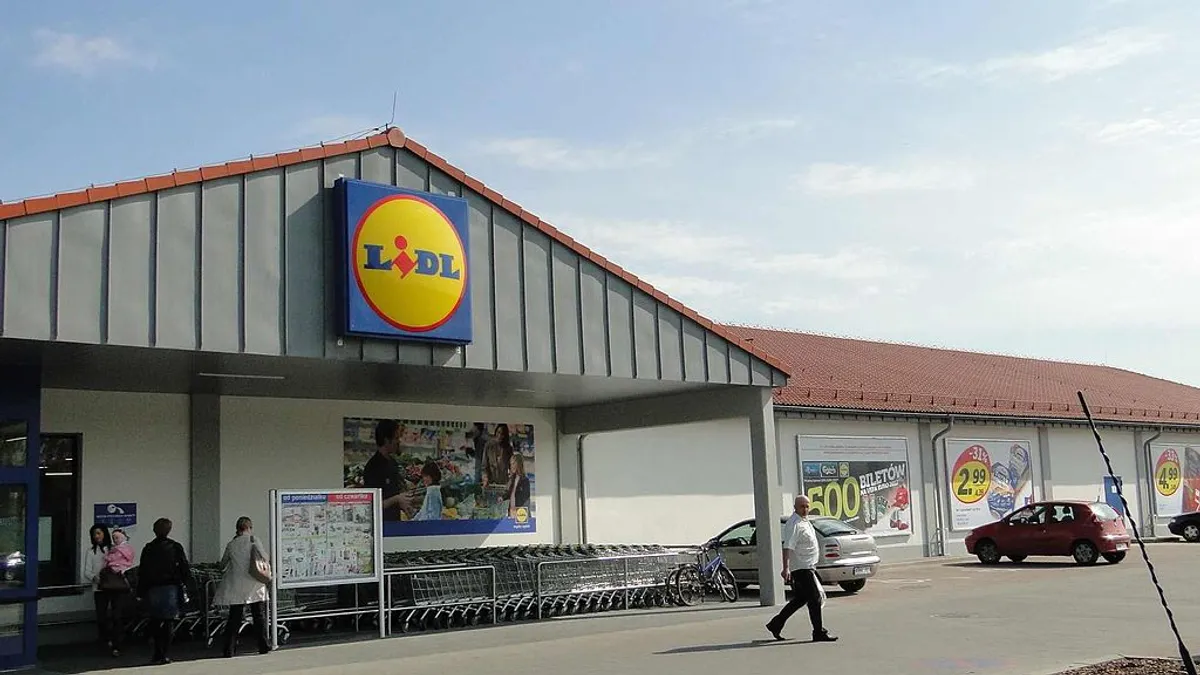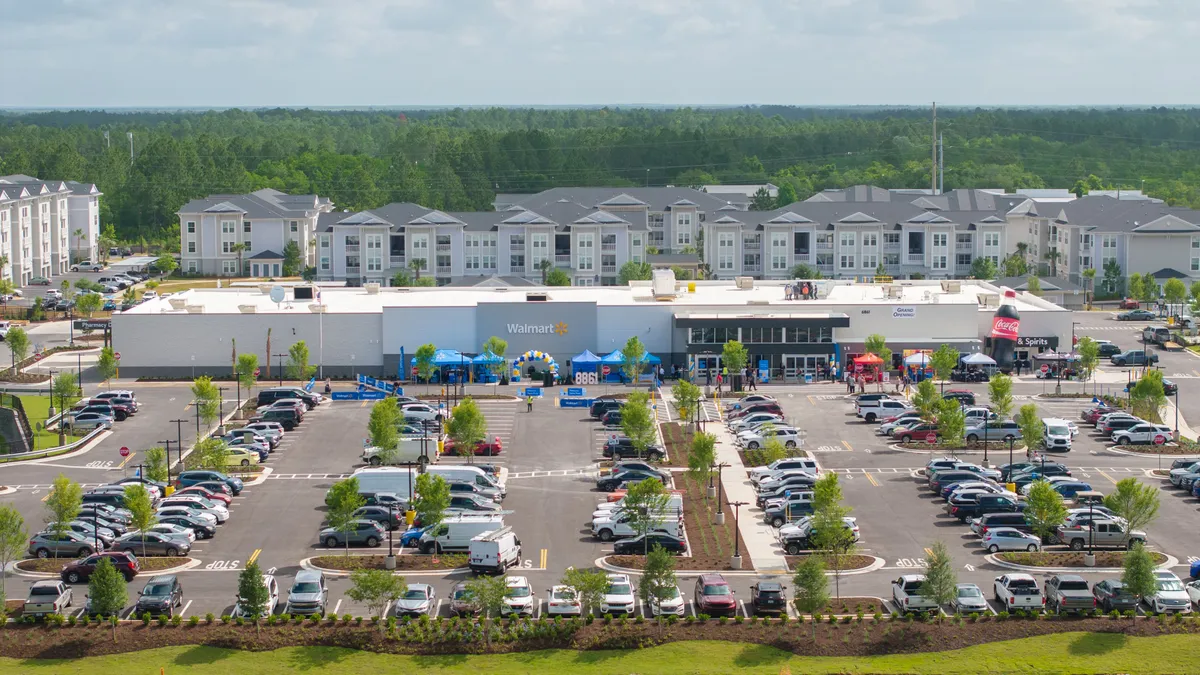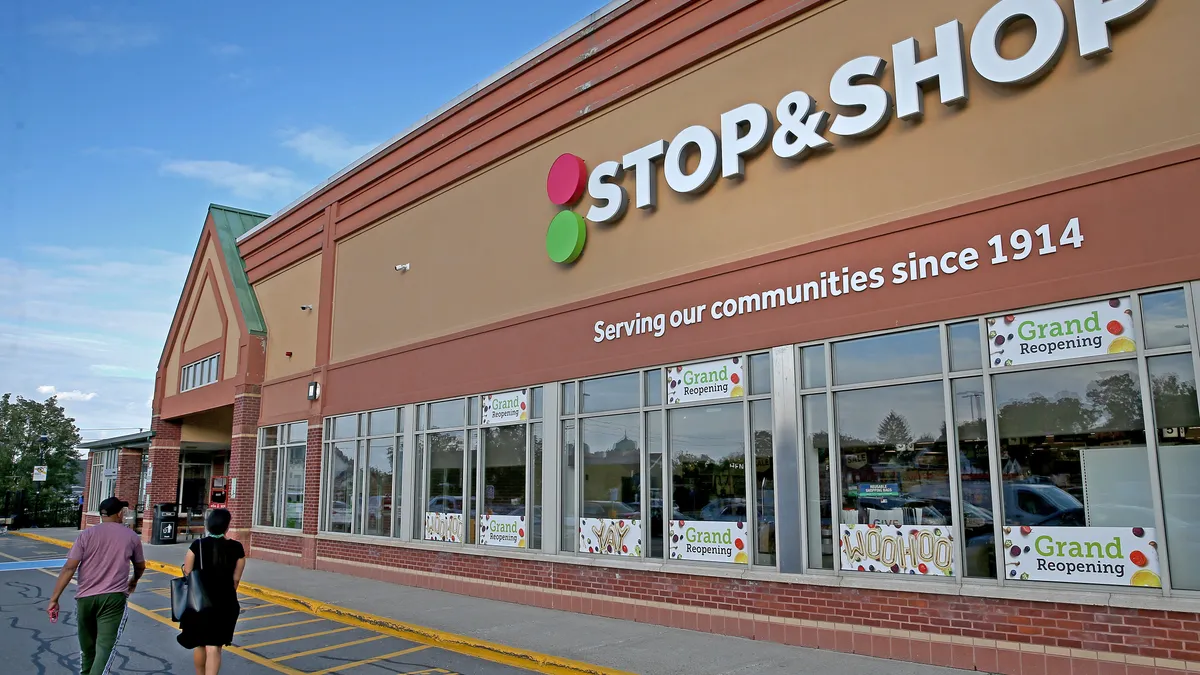Dive Brief:
- As Lidl prepares to open its first stores in the U.S. this year, the German retailer has debuted a new fresh-focused concept in Europe, writes Brick Meets Click.
- This “Lidl of the Future,” as the company calls it, includes a bakery department at the front of the store that offers prices 50% lower than competing supermarkets. There’s also a produce section and meat department that merchandises many locally sourced selections.
- In the back of the store, shoppers can find a varied assortment of general merchandise items like watches, hardware supplies and pajamas. The items rotate every two weeks to give the store a “treasure hunt” feel, according to Brick Meets Click.
Dive Insight:
Lidl may already be incorporating elements of its new concept into its American stores. Last month, The Washington Post took a tour of a Lidl prototype in Fredericksburg, VA, and noted the location is 35% larger than a typical company store. While it isn’t clear exactly how much overlap there is between this prototype and the company’s new “Lidl of the Future,” the two models seem to share a focus on making grocery shopping more of an experience.
Like the “Lidl of the Future” model, for instance, the Fredericksburg location includes a large bakery section that offers free samples, a sizeable produce department, cold beer, and a constantly rotating supply of general merchandise. The location also looks like the company’s new model, with its long glass-paneled walls and corner entrance.
It appears Lidl has learned quite a bit about American shopping preferences, and has made some key changes to its traditional model. That’s something many exports, most notably Tesco’s Fresh & Easy, have failed to do.
In addition, Lidl remains focused on its core value of offering an easier, more efficient shopping experience. As the Post explained, the 21,000-square foot Fredericksburg store contains just six aisles offering a limited assortment of mostly private label goods.
An insight into the company ethos came when CEO Brendan Procter discussed buying a bottle of ketchup in a traditional American supermarket: “There are probably about 24 aisles in the store,” he told the Post. “I have to find what aisle it’s in. I get there, I find that there’s 50 types of ketchup. Who honestly needs 50 types of ketchup? So we can streamline that.”
In conducting focus groups with American consumers, Lidl executives found people feel they have to compromise in choosing where to grocery shop. They can have high-quality products, but pay a lot for them, or pay less and get lower-quality items.
Lidl, on the other hand, wants to be the grocer that doesn’t ask shoppers to compromise. But can it really be all things to all people? Is it possible to offer efficiency, low prices and the sort of retail theater American consumers are used to? U.S. retailers won’t have to wait much longer to find out. But with grocers facing low margins, competition from other stores and online threats from Wal-Mart and Amazon, trying something different may be a refreshing change for the industry.










